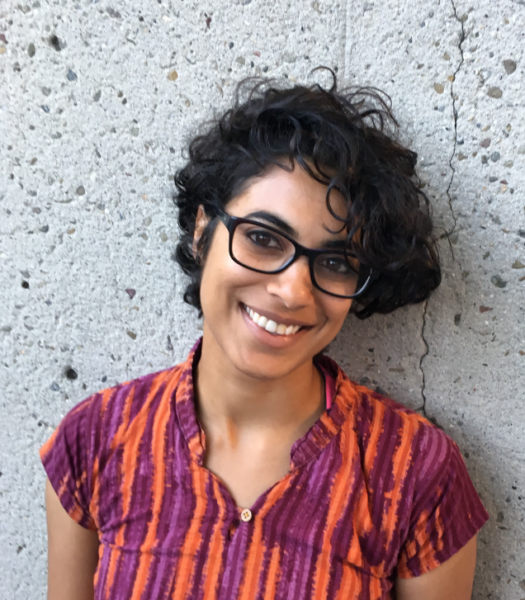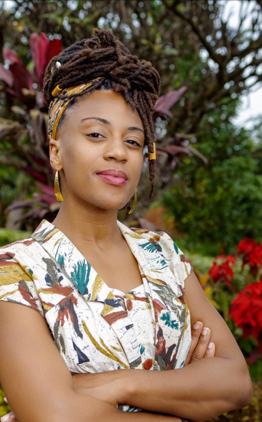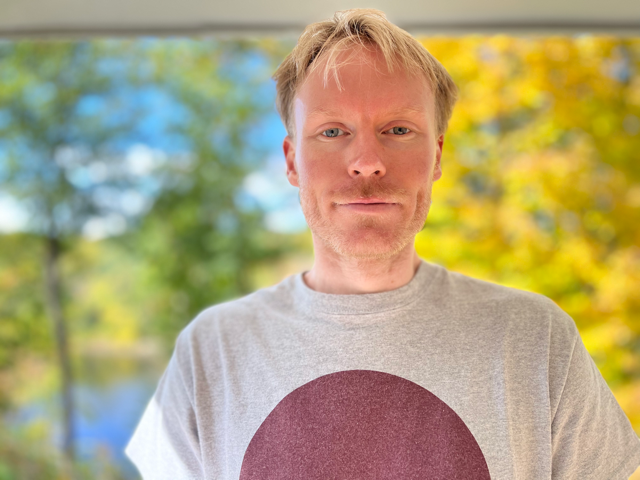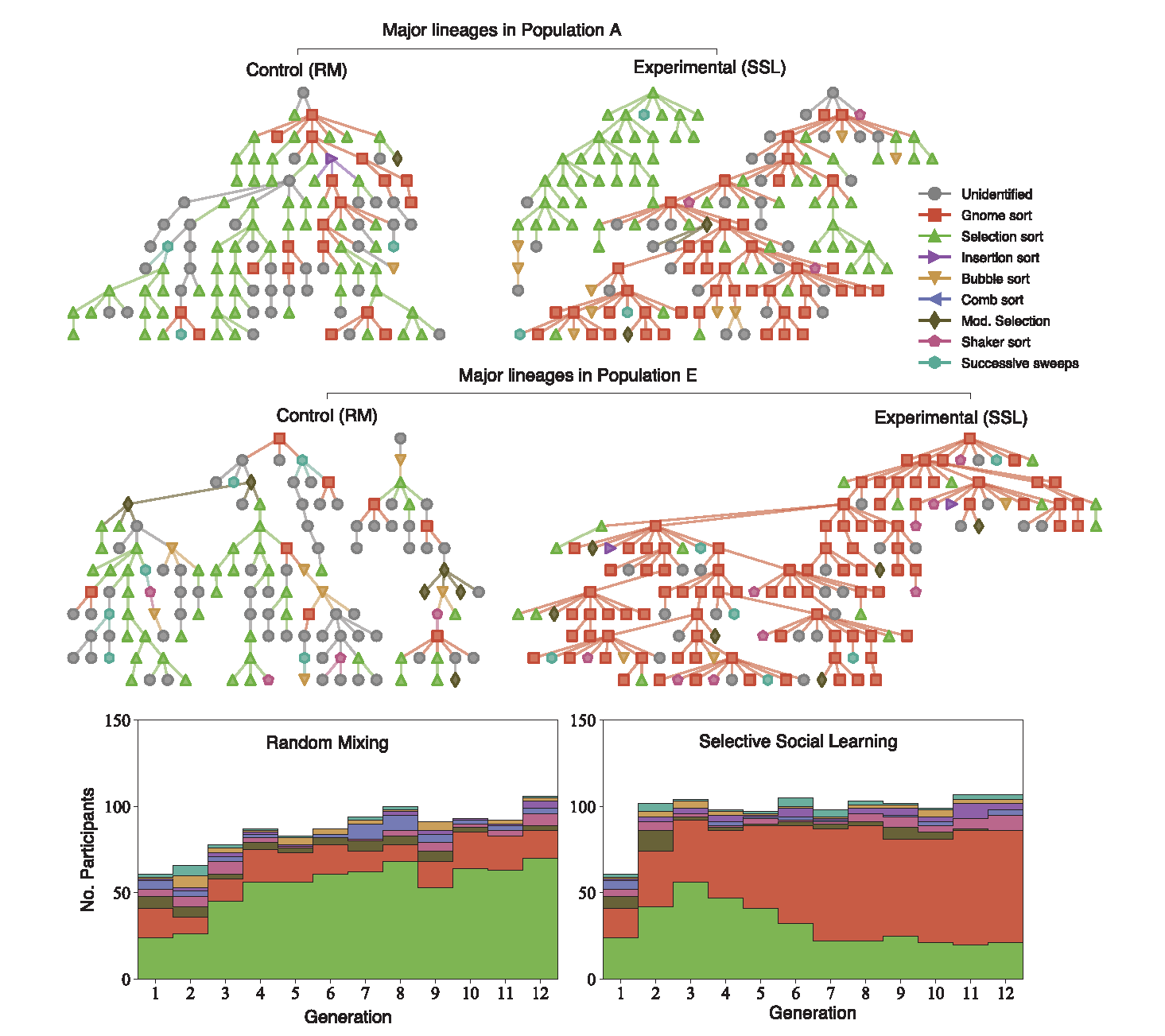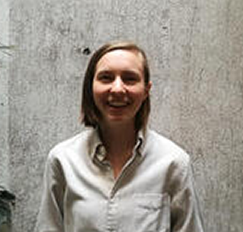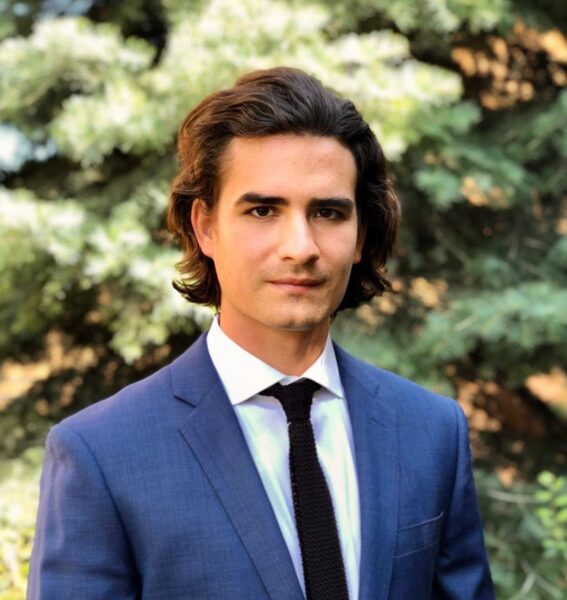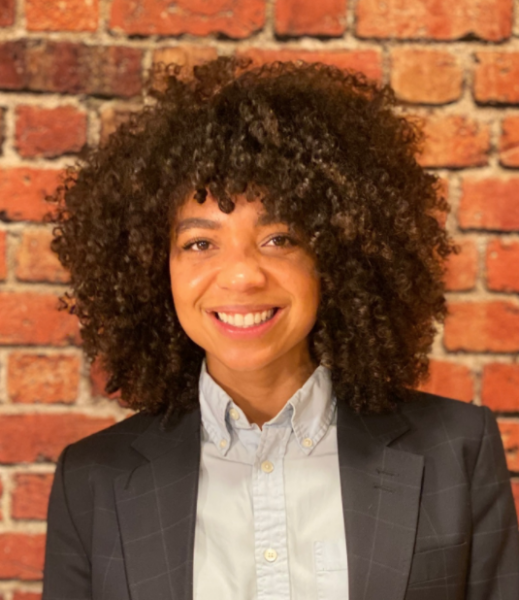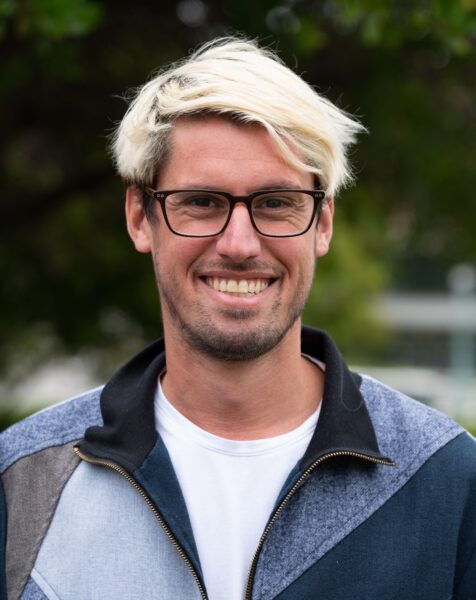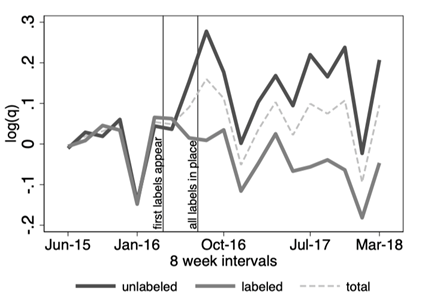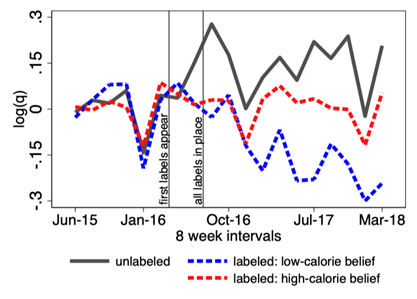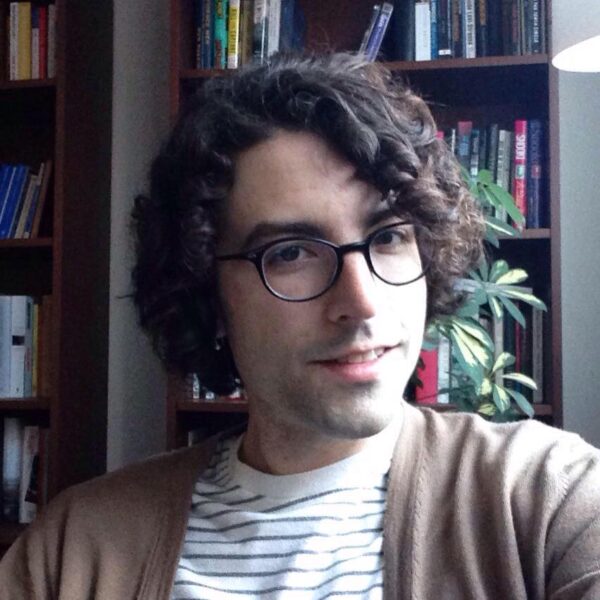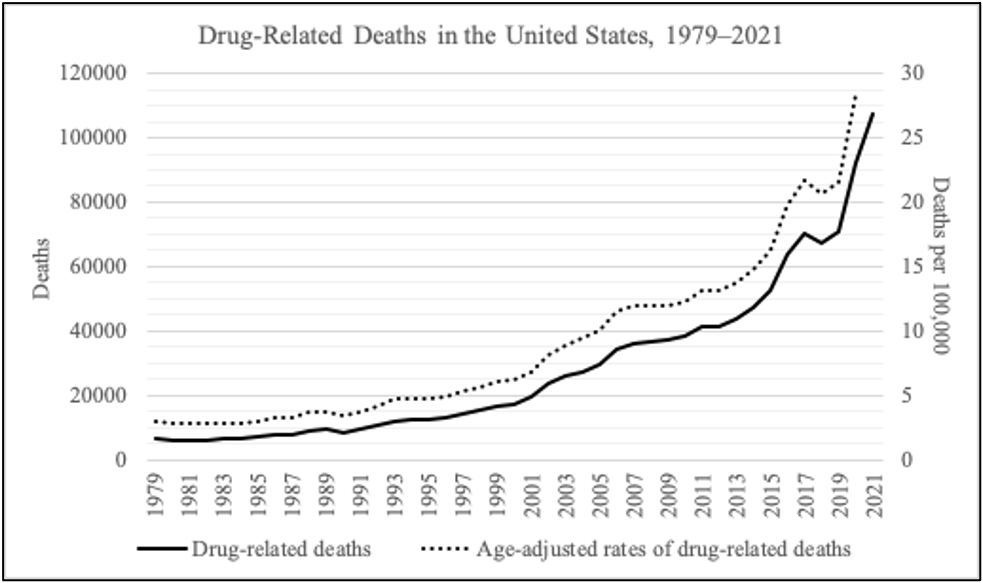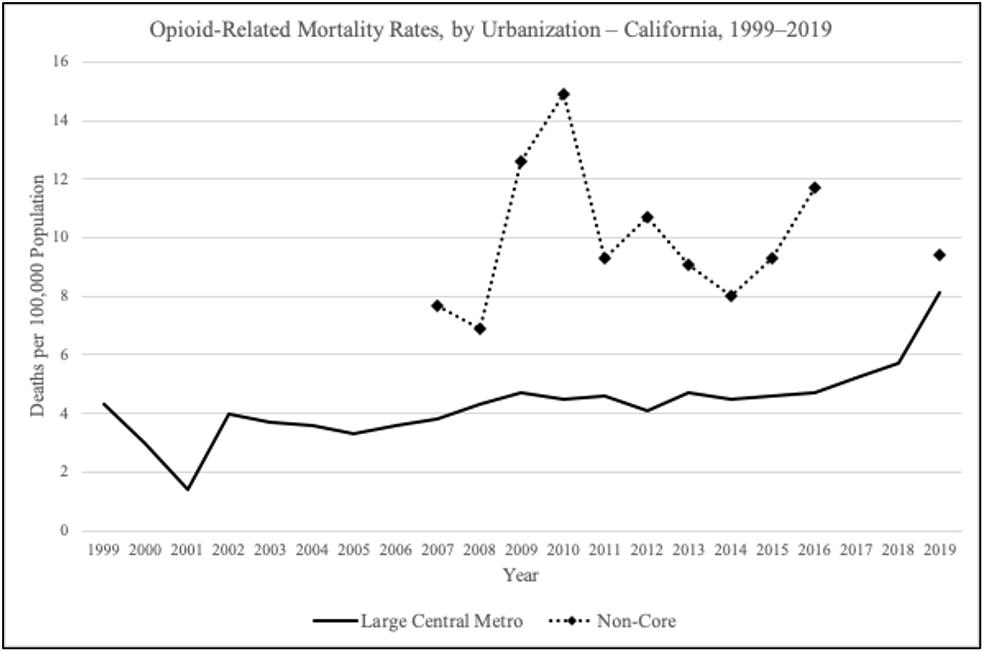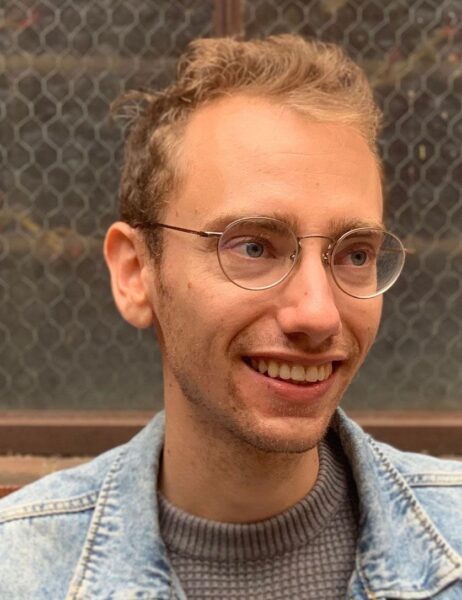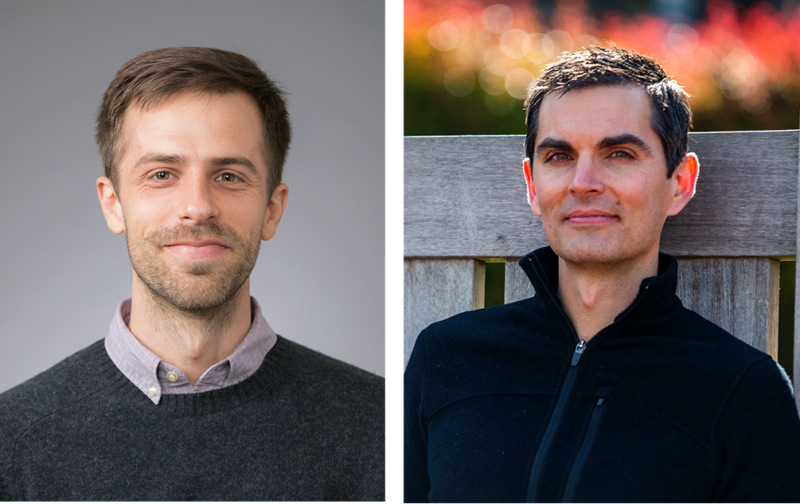This episode of the Matrix Podcast features an interview with Zahra Hayat, Assistant Professor of Anthropology at the University of British Columbia. She obtained her PhD in Anthropology at UC Berkeley, and is also trained as a lawyer with a background in intellectual property.
Matrix Content Curator Julia Sizek spoke with Hayat about her research on pharmaceutical access in the global South, particularly in Pakistan, and the regimes of price and property on which such access is contingent.
Listen to the podcast below or on Google Podcasts or Apple Podcasts. A transcript of the interview is included below.
Podcast Transcript
Woman’s voice: The Matrix Podcast is a production of Social Science Matrix, an interdisciplinary research center at the University of California, Berkeley.
Julia Sizek: Hello and welcome to the Matrix Podcast. I’m Julia Sizek, your host. And today our guest is Zahra Hayat, who is an assistant professor of anthropology at the University of British Columbia. She obtained her PhD in anthropology at UC Berkeley this last year and is also trained as a lawyer with a background in intellectual property. Her research focuses on pharmaceutical access in the Global South, particularly in Pakistan, and the regimes of price and property on which such access is contingent. Thanks so much for coming on the podcast, Zahra.
Zahra Hayat: Thanks for having me, Julia.
Julia Sizek: So let’s get started with the big overarching question of your research, which is the scandal of access, the way that pharmaceuticals are easily accessed in the West but are inaccessible in the Global South, and specifically in Pakistan, and the preventable deaths that result from this lack of access. What does contemporary access to pharmaceuticals in Pakistan look like?
Zahra Hayat: Yeah. Thank you for that. So I think– best to start off with why or what I’m trying to gesture at with the title of my dissertation, which is The Scandal of Access. And the idea of scandal is something that emerged very organically during fieldwork for me. A lot of my interlocutors would refer to various things vis a vis pharmaceuticals and people’s inability to access them through the language of scandal.
And over time, I began to think of it as much more than just a figure of speech or something that people would say rhetorically, and think about how conceptualizing scandal might help us understand what is going on vis a vis access to medicines in Pakistan. And so I’m trying to get at a couple of things with this idea of scandal.
First of all that I think the sort of overarching meta scandal that defines the stakes of my work really is that of preventable death. And by that I mean in a country with a population of 220 million people– it’s the fifth most populous country in the world. And people have some of the highest incidences of diseases that are treatable if not fully curable in the West, you know, so-called.
This includes hepatitis C. It includes breast cancer. Pakistan is among the highest rates of breast cancer in South Asia. Now these are all diseases for which medicines exist. And yet, due to lack of these and many other far simpler, far older medicines, Pakistanis are either suffering needlessly or dying prematurely.
And a particular example, I think, that might illustrate this idea of scandal is not a curative substance but a palliative substance, morphine. And I can talk more about morphine later. But I think the idea of scandal really first hit home for me when I started hearing over and over again from the people that I spoke to about how people with late-stage cancer in Pakistan, for whom treatment is now no longer a viable option, and who can only be given palliation at this point, simply do not have access to pain relief medication.
It is almost impossible in hospitals to get either fentanyl or morphine, which is sort of absolute basic standard of care for terminal cancer patients in the West. And the reasons for that are very counterintuitive. Usually, we think of drugs being difficult to access because they are too expensive, right, or they are under patent, and generic manufacture is not allowed in the Global South, which is something we see in India a lot.
In the case of morphine, none of these barriers to access actually / morphine is a drug that’s 200 years old. It’s been used for pain relief for 200 years. It’s not under patent anywhere. And it’s one of the cheapest medicines, even in the Pakistani scale of medicine pricing. And yet it’s almost impossible to get in hospitals.
And there is a very complicated constellation of bureaucratic policies, bureaucratic agencies, which has to do with a phobia of drug addiction and of morphine kind of percolating into the illicit realm, and therefore contributing to the problem of addiction as it’s called, that people who have cancer are not able to get it.
So it’s things like this that I’m trying to get at with the idea of scandal. There’s something egregious about this that you have illicit counterparts of morphine circulating on street corners. And doctors are forced to tell patients to go to the street to use that, figure of speech, and try to find morphine for their loved ones.
So this element of egregiousness, this element of outrage of a violation of some norm of decency or ethics, and also an affect. When people talk about this, there is this affect of this should not be happening, this should be easily preventable.
And yet, as I tried to show and as I’ve learned, it’s anything but easy. So this is sort of the, I guess, a little bit of a texture of what I’m trying to get at with the idea of scandal.
Julia Sizek: Yeah, so let’s talk a little bit more about access to morphine. So let’s say that you or a loved one is in a hospital, and you are trying to figure out how to get access to morphine for palliative care. What do those steps look like, and what are the rules that are governing whether or not you have access to morphine?
Zahra Hayat: That’s a great question. So some of the things that I’m going to say will be specific to morphine, but many of them will not. And they’ll be representative of the larger pharmaceutical landscape.
In fact, you know, ironically, just two days ago, one of my interlocutors at the Drug Regulatory Authority of Pakistan, which one can see as the counterpart of the US FDA, sent me an article in one of the leading national dailies, talking about how patients with cancer, including children, and they were a large focus of that piece, are suffering horrifically because of the pain of end-stage cancer and how it’s just impossible to get morphine.
And there were senior oncologists who had been interviewed for that piece, who spoke about how the entire bureaucratic regime that governs, controlled substances, of which morphine is one, because of the addictive potential, that regime is so complicated and so lengthy that the companies that are trying to supply morphine sometimes have to wait months and months in order to get an approval for a quota of morphine.
So I’ll give you a very specific example of one of, maybe, the two companies that are still supplying morphine in Pakistan. So that in itself is scandalous. We have to 20 million people. We have over 800 registered pharmaceutical companies. And only two of them are actually selling morphine. And there are reasons for this, and there are twofold.
One has to do with pricing, and one has to do with what I’m calling bureaucracy. So I’ll talk about the bureaucracy piece first. I spoke with the CEO of this company in a lot of detail, and she explained to me just how excruciating the process is for them. So they import their morphine from Switzerland because the technology that they need, modified or slow release, they’re not able to make locally.
So it’s imported from Switzerland. Before they can put in an order for import, they have to apply to the drug regulatory authority and a constellation of other bureaucratic agencies, including the anti-narcotics force, for permission. And this permission is not something that’s granted to them as a blanket permission.
You get it once, and then they know that you’re supplying morphine, and that’s it. Every time they want to place an order for morphine, they have to secure this permission. The biggest roadblock here is before they can submit an application for a new stock, their existing stock has to finish. So this seems like such a simple sort of timing-related glitch to fix.
But it has not been fixed for years and years because it’s not just a simple bureaucratic glitch. And this is, I think, what I’m trying to get at as well that these things do not have easy quick techno fixes. So as this person explained to me, she said once we are down to zero for our quota of morphine, that’s when we’re able to submit an application.
Now that application can take anywhere from three months to six months to approve. Once it gets approved, you can place an order with your supplier in Switzerland, and there’s a lead time for that order as well. The consequence of this is that for about six months of the year, this company has no morphine to supply to hospitals. And hospitals simply don’t have morphine.
And so what they end up doing with patients is either just turning them away or saying that heroin, which is the illicit counterpart of morphine, they derive from the same opium poppy plant– or telling them that you can try and go to one of the– they’re called “addas” in Urdu, which is basically a figure of speech, but it sort of refers to– it’s a trope for where drug addicts tend to huddle.
That’s the trope. It’s a caricature. Go to those street corners, go to those drug addicts, try to get heroin from them. Now this undertaking itself is impossible for a lot of people. Sometimes in desperation, they do do this. They do go to addas and get morphine. And I have heard of people who’ve done this. But then, they talk about how you don’t know what you’re getting.
You absolutely have no sense of the purity or the quality of it. But at that point, I think the need is so dire that you’re not even thinking about questions, such as, what is the quality of this material? Anything that will relieve the pain is what will do.
So the second piece that I want to quickly talk about has to do with price. And this is a much broader problem. The bureaucratic control issue is specific to morphine and other controlled substances. And I just want to mention very quickly on that– this is not a Pakistan-specific problem. So across the Global South, access to morphine is a huge issue.
Julie Livingston’s work on cancer in Botswana mentions the same thing. And if you compare the statistics for consumption of morphine per capita in a country like the US and a country like Pakistan, the difference is literally thousands of per cents. And of course, advanced cancer is much more common in places like Pakistan because of late diagnosis. So the need and availability are just completely disjunct.
On the price question, this is a much larger issue that has a very central connection to access and problems of access in Pakistan, and that has to do with state regulation of pricing. And I can talk more about that later. But just very quickly, the Drug Regulatory Authority of Pakistan sets the maximum retail price for every drug that can be sold in the country.
And these price ceilings that they set are unviably low for a lot of corporations. And this is not just something the corporations are saying to me, and I’m taking them at their word. But this is actually from having looked at their detailed cost data.
A lot of my fieldwork was in these pricing meetings of the drug regulatory authority, which was accessed, that I was very lucky to get and to actually see that a lot of these companies are supplying products at a loss. And morphine was actually one of them. And the reasons for the drug regulatory authority being so hesitant to grant price increases has very fraught political reasons.
And we can talk more about the pricing question later. But the disincentive basically for companies to supply medicines is that you’re not going to be making much of a profit. And this doesn’t apply to all drugs, but specifically to morphine, and to many other simple, very cheap drugs. And given that it’s so complicated to get these approvals and quotas, most companies simply don’t want to get into this.
I mean, the CEO of this one company that still does it on a humanitarian basis, in their words, because it’s making a loss for them, was that you’d have to be crazy to get into this business because what are you really getting. So I’ll stop here now. But we can chat more about pricing.
Julia Sizek: Yeah. So I think one of the things, especially in the US, that people think about is that access to pharmaceuticals is limited by ability to pay. We hear conversations about the price of insulin, for example. And this is entirely about people being priced out of buying drugs that they need.
But what you’re describing here is actually a case where low prices are prohibiting access. Can you explain how that’s working, and how that works against how we sort of normally think about this situation?
Zahra Hayat: Absolutely, I mean, that for me was perhaps the biggest surprise of fieldwork. I actually had no idea about this before I started fieldwork. And then literally every person that I met in the pharmaceutical industry would begin our conversation by talking about the problem of prices being too low, and that being the reason for so many drugs not being available on the market.
So it is absolutely a very counterintuitive kind of relationship between price and access here. I just want to make a little caveat and say that there are drugs that are in fact, in absolute terms, too expensive for most people in Pakistan to afford, and these include especially anti-cancer drugs.
However, from the point of view of pharmaceutical companies, the price ceiling that is set for most drugs is unviable. And now that, of course, is a subjective term, for some the complaint is that the profit that we’re making is simply too low for us to be able to continue supplying this drug. For some, as I mentioned in the case of morphine, they might actually be supplying the drug at a loss.
So why is this happening? What is this sort of very rigid regime of price controls that is actually pushing a lot of drugs out of the market? They are pushing drugs out of the market, and then also a diversion of drugs as– in company-speak, which is basically that take the example of something as simple as a thyroid drug, levothyroxine, Synthroid.
It’s one of the most commonly prescribed drugs in the US. In Pakistan, it is perpetually out of stock at pharmacies. And one of the reasons is that it’s an extremely cheap drug. It costs a few rupees for a pack. And as soon as it hits the market, a lot of it gets bought up by these middlemen, as they are called, and diverted to black markets, or gray markets, as a lot of my interlocutors refer to them.
They will either be taken out of Pakistan, sort of sometimes at a small scale on a flight in somebody’s personal luggage, or they’ll be sold on the “black market,” quote unquote. So the drug regulatory authority under a federal law, the drugs act, is authorized to set the price of every medicine in the country.
The rationale, the purported rationale, for setting the prices that they do is that this is a country with a very poor and a very sick population. And in order to give them access to medicines, we have to keep the prices low. That’s the logic that the free market cannot be allowed to run amok in a country like this.
That logic is theoretically sound because we have seen what happens when the free market, quote unquote, “takes over,” and astronomical drug prices in the US being an instance, where the government is really constrained because of the pharmaceutical lobby from controlling or lowering drug prices. But in Pakistan, what seems to have happened is that this has been taken too far in some cases.
And there is so much rigidity even over the granting of a small price increase that might make a product viable for a pharma company. That companies sometimes simply do not want to deal with the hassle, and the months and months of negotiation that they need to do with the regulatory authorities. And they simply withdraw the drugs from the market.
Now I want to say a couple of things about this, one from the point of view of the regulators, and the second from the point of view of the companies. What the regulatory authorities– once you really start sort of probing, you actually find a lot of people who agree that this entire regime is fundamentally not working.
They agree that drug prices should be granted. But they operate under a lot of constraint. And the constraint comes from very unexpected sources. That have absolutely nothing to do with the economics of supply and demand. And one of the biggest sources of this constraint is political pressure. So medicines are a hot button issue in the country because of a large sick population.
And it is something that a propagandist media likes to really hone in on. So any time that a price increase is granted by the Drug Regulatory Authority– for instance, the price of very cheap medicine was raised from 2 rupees, which is some decimal points of a cent, to 4 rupees– that’s just 2 rupees increase in absolute terms.
It was presented as prices of many essential medications increased by 100%, and the national newspapers will carry that news. The drug regulators and the politicians who ultimately are the ones who have to sign off on these price increases– so these price increases are recommended by the regulators, and then they have to go to the legislature for approval.
And I’ve been told by official after official that the legislators will simply not sign off on the price increase because they’re scared of bad publicity, of being the people who approved the price increase.
So we’re dealing again with a very complex constellation of democratic politics in a country that’s also controlled to a very large extent by the military, but where a propagandist media does have a lot of power, I think, to scare people.
And then the second piece of this that actually relates directly to scandal is a history of an anti-corruption agency in the country called the National Accountability Bureau, which is a very activist sort of government department. It is controlled by the military to an extent. Many people think of it as an instrument of political scapegoating.
There was an actual scandal several years ago where price increases were granted to pharmaceutical companies. But then a NAB investigation was begun against those companies and against many officials on the grounds that they must have been– they must have accepted bribes from these companies in order to grant them the price increase.
And that history really, I think, reverberates among regulatory officials even today and acts as a huge constraint. And so there is just a lot of fear among those responsible for granting price increases to actually go ahead and grant them. So this, again, is one piece of a very complex set of issues.
But to me, this was just all completely new and made me realize that demand and supply and economics doesn’t have very much to do with what’s going on with pricing in Pakistan.
Julia Sizek: Yeah. And so I think another big component of what you’re thinking about in your research in addition to this issue of pricing is that of the intellectual property regime. So let’s dive into that a little bit. Let’s say if you’re an American company and you have made this drug, how does a Pakistani company get that ability to process that same drug under intellectual property law?
Zahra Hayat: Yeah. So I guess the first thing that I’ll say is just to set the stage for this is the trade-related aspects of property agreement, TRIPS, which is the instrument of the World Trade Organization that governs intellectual property across most of the world. And the purported aim of which is to harmonize, quote unquote, “intellectual property laws” among all signatory states.
Now there is obviously a very robust body of work that is critical of TRIPS, and that really challenges this euphemism of harmonization as it basically being an instrument of neoliberal control because a lot of pharmaceutical innovation, “innovation” in quotes, but a lot of the new drugs, or the cutting-edge drugs, or especially biologicals are being developed in the West because of the huge resources required for R&D, and clinical trials, and so on.
And what these companies really are wanting is not just to make profits in the Global South, but also to control markets in the Global South. And here I want to point to something, I think, that’s really fundamentally important to understand about how intellectual property works that– and I can do this through the example of a series of very high-profile patent battles that have taken place in India, for instance.
And this is relevant for the case of Pakistan as well. One of the most well known cases was the case of Novartis, leukemia drug GLEEVEC, which Novartis had a patent for abroad, and it was trying to get a patent in India. So one of the most important things to know about TRIPS is that you need to apply separately in every country for a patent.
Novartis went into India and tried to assert its patent. A lot of companies that were already making generic versions of GLEEVEC and selling them for thousands of dollars less and making this life-saving cancer drug accessible to a very poor Indian population, opposed the application for a patent as did many nonprofits and patient advocate groups.
And Novartis really fought hard. And there are scholars like Kaushik Sundarajan, who’ve done very meticulous work on this precise case actually. And what’s really interesting, I think, in– and also, just very revelatory about how intellectual property works is that Novartis was not trying to get the generics companies to stop making copies, as they call them, of the drug because they wanted to be the suppliers to the Indian population, instead, and thus make a profit.
And the reason for this is that even the lowest price that Novartis would be able to charge for GLEEVEC in India would be something that most Indians would not be able to pay. And Novartis was– while it was fighting this case– also giving away a lot of GLEEVEC for free.
And what it said actually as part of its litigation and as part of the public relations fiasco that was happening around this case was that if our patent is not upheld in India, we will withdraw this free GLEEVEC program that we have in place. And so scholars have really asked this question.
They were like, why is Novartis so insistent on protecting its intellectual property, even when it is not making a profit on this drug and cannot make a profit on this drug. And there are two reasons for this, and I think they’re really important to understand because they really tell us how IP now, especially in the pharma realm, works in the Global South.
One reason is that a lowering of the price, which would be represented by generic manufacture, would stir up and has stirred up actually criticism among Novartis’s consumers in America and Europe as to why they are being charged astronomically high prices when people in India can get the drug for a few thousand rupees.
So there’s, of course, the possibility of arbitrage, the drug being smuggled into the West. But apart from this concrete possibility, there are also the optics of a drug that people in the West are really also struggling to be able to afford, as you mentioned earlier, being available so cheaply.
So it is to protect its international scaffolding of prices that Novartis would deprive Indian patients of the drug, even though it’s not going to make a profit there. And a second very important reason is how pharma companies use intellectual property, not just to make profit in that particular country, but as a means of controlling certain markets.
And again here, the Indian example is very instructive because it contrasts radically with Pakistan. India is one of the world’s largest generics manufacturers as we know. And so what Novartis and a lot of other pharmaceutical multinationals fear is that if generic versions of their drugs are made in India, they will then be exported, because these Indian companies are large exporters, to markets, especially in Latin America, which these companies are very interested in actually making profits in.
So what they’re trying to do by preventing generics manufacture in India is not so much preserve their monopoly in India and be able to sell to Indian patients, but to preserve their monopoly in other markets. So we also see how intellectual property– even though normative law says patents are only national in scope.
It basically works as part of this very tangled global web, which has repercussions for patients in the Global South. And Pakistan very quickly falls into this calculus in– I think the clearest way to articulate is that Pakistan does not matter to most pharmaceutical companies. And many of my interlocutors have told me in very evocative language.
They’ve said Pakistan is a decimal point correction in the profits of pharmaceutical multinationals, or the only value Pakistan has for pharma MNCs is its nuisance value. And what they’re trying to get at again is the poverty of the Pakistani population and their inability to afford many of these drugs.
But a crucial difference between a place like Pakistan and India is that big pharma also isn’t particularly interested in preventing generics manufacture in Pakistan because Pakistani companies are not big exporters at all. So it’s not like big pharma’s other markets are under threat from Pakistan.
And so what ends up happening is when a new drug is developed in, say, the US or Switzerland, it will, in most cases, simply not make its way to Pakistan at all. So the pharmaceutical company is not going to go in or even bother applying for a patent on the drug because it knows that it doesn’t really have anything to gain either from selling in this market or from preventing generics manufacture in this market.
And so countries like Pakistan basically tend to get bypassed. And so we end up in this paradoxical kind of situation where, yes, it’s not actually patents on these new drugs that are preventing the population’s access. It’s just that the companies are not even motivated to apply for patents in the country.
And so you see what we have in the case of Pakistan is very, very different from the more standard big pharma versus local generics standoff that has been extensively researched and written about. India being one of the main sites for this because of its generics industry.
But places like Pakistan are just left out of both that narrative and also of, I think, these particular flows of global pharmaceutical capital by just not mattering enough.
Julia Sizek: Yeah. I think it’s both very enlightening and very depressing to think about this intersection of the capital, impulse of these companies to try to make more money, and then at the same time, it’s just not worth it either to protect their intellectual property in a place like Pakistan or to apply to be part of that.
And I think one of the interesting ways that this shows up, and that you analyze in your research, is actually the case of hepatitis C because hepatitis C is something that is quite prevalent in Pakistan. So can you tell us a little bit about hep C specifically and what that looks like?
Zahra Hayat: Absolutely. And hep C is a great example also because the drug for hep C, Sovaldi, is a very, very rare exception to the trend of the newest Western drugs not coming to Pakistan. And I’ll talk about how it made its way to Pakistan. So first of all, yes, the incidence of hep C in Pakistan is extremely high. Unofficial figures put it at as high as 10%, perhaps, but it could be higher.
And before 2015, the treatment for hep C, anywhere, not just in Pakistan, was basically the way that you would treat a chronic disease that you couldn’t really cure. And there were interferon injections. It was an exhausting, and long, and very, very expensive kind of process. And there was a lot of suffering actually in Pakistan because of hepatitis C.
And the spread of hepatitis C is actually also something that is an issue. It’s what a lot of the narrative sort of in the global health landscape tends to focus on, I think, as it does of the population behaviors in the Global South. And there’s obviously a critique of that because it is, I think, redirection of focus from a big pharmaceutical capital and how it works to patient behavior.
And we have obviously seen a trend in anthropology and medical anthropology from directing our attention elsewhere to these larger structures of exploitation and inequality, instead of just talking about how patients or how people have issues with hygiene or compliance, and so on. That said, as part of this structural landscape, there is, for instance, a lot of sharing of syringes among drug users.
And there aren’t any safety protocols in place for them. And so that tends to be a demographic where hep C is very high. But there’s an actual fear among people in Pakistan of contracting hepatitis, if you go to a dentist, or if you go– and have your hair cut. And these are legitimate fears because there have been instances of many, many people contracting hep C in these ways.
And because it is so prevalent in the population, and it can remain latent for a while, chances of getting infected are actually very high. So and at this point, Pakistan actually has, if I’m not mistaken, the highest rate of hep C in the world. Egypt used to be at the top, and then Egypt has largely eradicated the disease.
And that brings me to the story of Sovaldi, which is a drug, and it was hailed by everybody as this path-breaking, paradigm-shifting drug, brought to market by Gilead, which is actually based close to us in Foster City, California.
And it was considered such a transformative kind of drug for hep C, rendering it from a chronic condition to a completely curable condition with a course, I think, of four weeks of taking a pill a day. And there’s obviously much more. It’s more complicated like there are combination therapies, and so on.
But I think with Sovaldi, this shift from chronic management to cure happened very definitively and continues to be the case. And this came out in 2016 the US, if I’m not mistaken, thereabouts. And the FDA actually granted expedited review as it does for really breakthrough therapies, which it knows are also in urgent need.
And it came to the US market and really created a sort of a PR storm in part because of the revolutionary nature of the drug, but also because of the staggering price tag that the drug came with. And this is something that, I think, has become etched in people’s minds, anybody who’s sort of in the pharmaceutical world, that the price of a course of Sovaldi was $84,000.
And of course, when you look at how structures of payment work in America, it’s not that the final patient would be paying this money out of pocket, but somebody would have to pay it. So insurers were hesitant to even authorize this drug. So the $84,000 price tag, and the sticker shock that came with it was a big– it actually stirred a lot of conversation in the US on drug prices getting out of control.
And if you look at the public filings of Gilead, and you look at some of the information about how they actually set this price, which they had to make public because there was actually a congressional inquiry into how the price of Sovaldi was set in the US, you get this insight into how pharmaceutical companies think about pricing, and how radically different this is from the case of Pakistan.
You’re not thinking about what the government will allow. The kinds of things that you’re thinking about are what can we get away without inciting an uproar. And it’s literally couched in language like that. So they did price it. It incited an uproar to an extent, but they also made huge profits. The company made huge profits.
And this is where I think that Gilead also deserves credit. I am trying, even as I write about this, is to not take this very simple black and white– big pharma is evil, or big pharma as sort of this beneficent force in the world– kind of binary because it’s obviously much more complicated than that.
And the case of Gilead really illustrates that because what Gilead did, while it was making these astronomical profits in America and Europe, it also started what is called a Gilead Access Program, and it took Sovaldi to countries like Egypt, to countries like Pakistan, which had very high incidences of the disease, and which could not pay even hundreds of the price that Gilead was charging for Sovaldi abroad.
And in Pakistan, in particular, Gilead entered into a collaboration with a very well-reputed and well-respected Pakistani company called Ferozsons, and they developed this working relationship, a very strong relationship over the years. And they, through this local company, agreed to sell Sovaldi in Pakistan at 2% of the price that they were charging in the US.
They were not going to make a profit with this price in Pakistan, but they were still breaking even, which gives you a sense of their profit margin in the US at the prices that they were charging. And the reason they wanted to do this break-even kind of strategy, and as they pitched their Global Access Program is that this is not corporate social responsibility, this is not philanthropy.
What we want is for a sustainable model whereby drugs can make their way to people who need them the most and can’t pay for them in a way that the company can also sustain. So there is I think good sense to that logic. And so this drug comes to Pakistan. It’s priced as I said at 2% of its US price.
It costs around rupees 55,000 for a course, which now would be something like a little less than $500, I think, if I’m getting my math right, which was still unaffordable for the large majority of people, but still much more so than what the original price was. And then the really interesting thing that happened, has to do with intellectual property.
So Sovaldi then, Gilead then entered into a license with its local partner, Ferozsons, giving Ferozsons permission to make a copy of Sovaldi locally. They gave them the technical know-how, and they basically helped them manufacture this copy, which was much more affordable.
And as part of this license, there were certain stipulations that Ferozsons had to buy the raw material from companies that Gilead had approved. And some of these approved companies were in India. So Ferozsons was able to source the raw material from there, make much more affordable versions, and start selling them in Pakistan.
And then something really interesting happened. Once people– local pharmaceutical companies caught on– and they had already been on top of all of this, they knew that Sovaldi had come out in America, they knew that something huge had happened– they all wanted to jump on the bandwagon. And they applied to the Drug Regulatory Authority of Pakistan for registration and said, we want to make copies, too.
And the Drug Regulatory Authority granted this registration to, I think, about 15 or so local companies. And so what this did was that the price of a course of hep C medicine dropped down to something like a few thousand rupees.
In all of this, Gilead had an option. Gilead could have prevented this. But what did they need to do to prevent this. They, first of all, needed to apply for a patent on Sovaldi in Pakistan. If they were granted that patent, they would then have to go to court and assert that patent, and say, all of these local companies that don’t have a license with us are just making unauthorized copies.
And this is a violation of our intellectual property. And the only company that should be allowed is the company that we’re actually partnering with, i.e. Ferozsons. Gilead did not do this.
And this is something– the next point I think is really crucial to appreciate because what a lot of people say about Gilead is that Gilead chose to relinquish its intellectual property and give this drug for free to people in Pakistan. Now that’s partially correct. And without taking away from Gilead’s initiative– because they didn’t actually have to do this.
So that part is also important to understand. They could simply have sidestepped Pakistan altogether. But another reason, and another way that we can think of this relinquishment, so-called, of Gilead’s intellectual property is the thing that I said earlier, which is that, what incentive does Gilead have to apply for a patent in Pakistan and to follow it through?
And interestingly– I dug around a little bit and found that there was actually an application that was filed but never really followed up. And when you speak with people at Gilead, they just have conflicting stories of why they didn’t apply for a patent in Pakistan. But the upshot of all those stories, honestly, is that it wasn’t in their interest to apply for a patent in Pakistan.
There was no way that they could make a profit on Sovaldi in Pakistan. They couldn’t charge a price high enough to enable them to do that. And they don’t really see any Pakistani company as a threat to them. So this one company that they entered a license with Ferozsons is actually constrained from exporting the local version that it’s making.
But Ferozsons really values their relationship with Gilead, and it is a very important relationship. So they wouldn’t really go against Gilead and try to flout their authority and try to compete with them anyway. So in a way, Gilead is accomplishing the sort of control that it wanted by having this license with the one company that it considers high quality.
And it is bothered by this plethora of local copies. And there is a lot of criticism coming from their end about how we don’t have any idea of the quality of these drugs because we have no control. We don’t know where they’re sourcing their API and so on. But again, they’re not pushed enough to stop any of this because it’s not really affecting their profit numbers.
So I think what this case really illustrates is, again, how intellectual property can bypass certain places. A relinquishment of intellectual property can be seen as an act of great largess. But it can also be seen as a very pragmatic calculation instead of capitalist profit-driven logics. And I think that holding space for both of these is important.
It would be wonderful if more companies did what Gilead did because Sovaldi is one of the very, very rare instances of a brand new drug that is just released in the West coming to Pakistan within a year. This rarely happens. So far, nobody has really jumped on this bandwagon and tried to do this with another drug. But that is the hope that this continues to happen.
But I think while we laud these efforts and while we try to have more of this, it’s just also important to be perhaps clearer on the intellectual property dynamics and what is really at play.
Julia Sizek: Yeah. Well, that is just so fascinating to really think about the intersection of both the profit-making impulse of these companies and then how it intersects with intellectual property and so. With that, I just want to thank you so much for coming on the podcast.
Zahra Hayat: Thank you. This is wonderful to be in conversation with you.
Woman’s Voice: Thank you for listening. To learn more about Social Science Matrix, please visit matrix.berkeley.edu.
